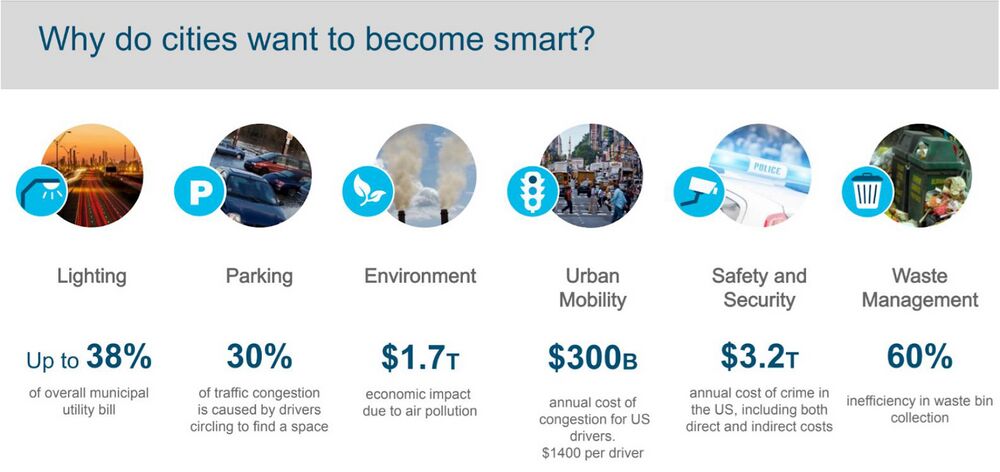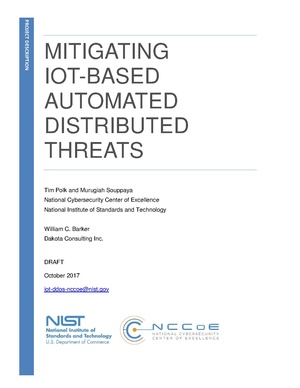Benefits and Cybersecurity and Privacy Risks: Difference between revisions
No edit summary |
No edit summary |
||
| Line 84: | Line 84: | ||
*Degradation of trust in government and government services | *Degradation of trust in government and government services | ||
*Danger | *Danger | ||
|} | |||
Many of the vulnerabilities and threats that could affect Smart City environments are | |||
similar to the cybersecurity vulnerabilities and threats commonly found in the | |||
traditional enterprise information technology (IT) environment. Additionally, it is | |||
unarguable that the consequences in the Smart City context are potentially more | |||
complex and catastrophic given the cyber-physical aspects of Smart Cities as well as | |||
the broad reach and expansiveness of Smart City implementations (e.g., citizens, | |||
government, the private sector, cross-jurisdictional elements). | |||
Moreover, it is important to recognize that cybersecurity and privacy risks to Smart | |||
City environments is not merely hypothetical or notional. Indeed, there have been | |||
several high-profile cybersecurity and privacy events (among countless data | |||
breaches and attacks around the globe) that have had real, damaging effects on | |||
some cities and communities who are leading the Smart City movement. | |||
The following four tangible examples of Smart City cybersecurity and privacy risk are | |||
based on publicly-available information. | |||
{| class="wikitable" | |||
|colspan="2"|[https://www.npr.org/2018/12/05/673958138/georgia-charges-iranians-in-ransomware-attack-on-atlanta <u>Atlanta Ransomware (March 2018)</u>] | |||
|- | |||
|colspan="2"|In March 2018, the City of Atlanta, Georgia, fell victim to a SamSam ransomware attack. Government agencies were locked out of their systems, and applications | |||
and services were forced offline - in some cases for months. The attackers were asking for approximately $51,000 in Bitcoin as a ransom payment. Similar attacks were allegedly conducted in ten U.S. states and Canada - including Newark, New Jersey; the Port of San Diego; and the Colorado Department of Transportation. | |||
|- | |||
|<u>Vulnerability</u> | |||
|Likely weak access control measures, which allowed a successful brute force attack (i.e., attackers guessed credentials to access system). In addition, a January 2018 audit of Atlanta’s IT systems identified 1,500-2,000 vulnerabilities in the city’s IT systems, which may have facilitated initial access to or the eventual lateral movement with the city’s infrastructure. | |||
|- | |||
|<u>Threat</u> | |||
|In November 2018, two Iranian nationals were charged with executing the SamSam ransomware attack; they are not considered to be associated with a nation-state actor. | |||
|} | |} | ||
Revision as of 18:44, December 19, 2021
| Cybersecurity and Privacy | ||||||
|---|---|---|---|---|---|---|

| ||||||
| Sectors | Cybersecurity and Privacy | |||||
| Contact | Lan Jenson | |||||
| Topics | ||||||
Activities
| ||||||
- Authors




 [[File:|x100px|link=Alex Huppenthal]]
[[File:|x100px|link=Alex Huppenthal]]











 [[File:|x100px|link=Ed Walker]]
[[File:|x100px|link=Ed Walker]]


{{{summary}}}
Cities and communities stand to harvest unprecedented benefits from advances in
information and communications technologies (ICT), in general, and Internet of
Things (IoT) and Artificial Intelligence (AI), in particular. Smart cities inevitably
introduce new or heighten existing cyber risks, which demand proper consideration
in design to ensure the optimal realization of intended Smart City outcomes.
Smart Cities Benefits
Smart cities are associated solutions and capabilities defined by the integration of technology, connectivity, and data to improve the quality of and accessibility to citizen services and to improve the livability of the city and community. Smart cities have the potential to address key challenges, including air and other environmental pollution, traffic congestion, crime, and economic development. Many of these challenges can be directly connected to a direct and/or an indirect fiscal impact (e.g., operational costs, lost economic productivity); conversely, Smart City solutions may have direct benefits in terms of improved services or livability as well as associated benefits of cost savings through enhanced efficiency and a boost in economic productivity, development, and opportunity.
While there are many benefits associated with the promise of Smart Cities, there are also many risks and opportunities for unintended consequences. For Smart Cities to truly be successful and reach their full potential, it is important for those designing, developing, and implementing Smart City solutions to properly manage risk. Risk, in the context of Smart Cities, may be found in many common categories such as operational, financial, technical, contractual, legal, reputational, and political risk; however, one area of risk that is becoming increasingly important is cybersecurity and privacy risk. Addressing cybersecurity and privacy by design is critical to risk mitigation and enabling the successful development of Smart Cities and its benefits to citizens.
Cybersecurity and Privacy Risk
Risk (R) is commonly considered a function of three factors: vulnerability (V), threat (T), and consequence (C). While there is some contention on what the appropriate formula is, there is a clear, positive relationship between risk and each of its three variables (e.g., as consequence increases, risk increases). A common mathematical expression of risk is that risk is the product of vulnerability, threat, and consequence – or R = V x T x C.
This general notion of risk certainly applies in the cybersecurity and privacy context. With the increasing ubiquity of connectivity, cybersecurity and privacy risk is a concept that must be thoroughly considered in most, if not all, domains, including the Smart City environment. Risk in the Smart City context can be attributed to a wide variety of factors given the nearly infinite permutations of potential Smart City-related vulnerabilities, threats, and consequences.
| Example Smart City Cybersecurity and Privacy Vulnerabilities, Threats, and Consequences | ||
|---|---|---|
| Shopping List | Vulnerabilities | Threats |
|
|
|
Many of the vulnerabilities and threats that could affect Smart City environments are similar to the cybersecurity vulnerabilities and threats commonly found in the traditional enterprise information technology (IT) environment. Additionally, it is unarguable that the consequences in the Smart City context are potentially more complex and catastrophic given the cyber-physical aspects of Smart Cities as well as the broad reach and expansiveness of Smart City implementations (e.g., citizens, government, the private sector, cross-jurisdictional elements).
Moreover, it is important to recognize that cybersecurity and privacy risks to Smart City environments is not merely hypothetical or notional. Indeed, there have been several high-profile cybersecurity and privacy events (among countless data breaches and attacks around the globe) that have had real, damaging effects on some cities and communities who are leading the Smart City movement.
The following four tangible examples of Smart City cybersecurity and privacy risk are based on publicly-available information.
| Atlanta Ransomware (March 2018) | |
| In March 2018, the City of Atlanta, Georgia, fell victim to a SamSam ransomware attack. Government agencies were locked out of their systems, and applications
and services were forced offline - in some cases for months. The attackers were asking for approximately $51,000 in Bitcoin as a ransom payment. Similar attacks were allegedly conducted in ten U.S. states and Canada - including Newark, New Jersey; the Port of San Diego; and the Colorado Department of Transportation. | |
| Vulnerability | Likely weak access control measures, which allowed a successful brute force attack (i.e., attackers guessed credentials to access system). In addition, a January 2018 audit of Atlanta’s IT systems identified 1,500-2,000 vulnerabilities in the city’s IT systems, which may have facilitated initial access to or the eventual lateral movement with the city’s infrastructure. |
| Threat | In November 2018, two Iranian nationals were charged with executing the SamSam ransomware attack; they are not considered to be associated with a nation-state actor. |


